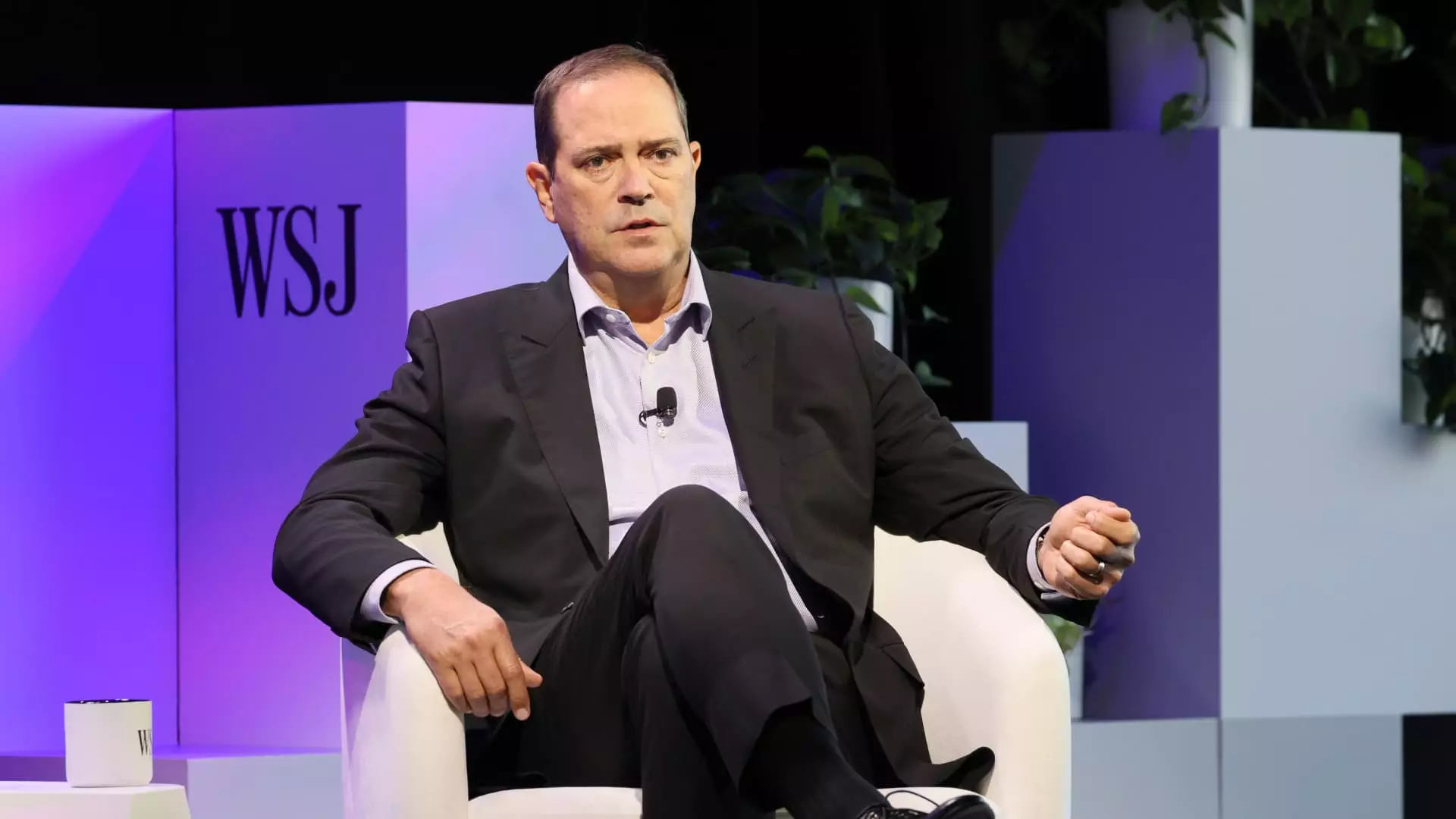Cisco Systems, known for its technology and networking solutions, has recently reported its fourth consecutive quarter of declining revenues. Despite surpassing analysts’ expectations, the company’s stock saw a 2.5% drop during after-hours trading. For the quarter ending October 26, Cisco recorded earnings per share (EPS) of 91 cents on an adjusted basis, slightly above the anticipated 87 cents. However, the revenue for the quarter stood at $13.84 billion, marginally exceeding the $13.77 billion forecasted, yet still reflecting a significant 6% decrease from the $14.7 billion reported in the same period last year.
The net income also experienced a downward trend, falling to $2.71 billion or 68 cents per share, a stark decline from $3.64 billion or 89 cents per share a year prior. This erosion raises questions regarding Cisco’s market positioning and effectiveness, especially in light of competition in the networking sphere.
Breaking down the revenue streams reveals that Cisco’s networking division was particularly hard-hit, facing a staggering 23% drop with revenues of $6.75 billion, falling short of the $6.8 billion expected by analysts. Conversely, the security segment showcased remarkable resilience, doubling its revenue to $2.02 billion and surpassing the anticipated $1.93 billion. This significant growth in security is noteworthy, as cybersecurity moves toward becoming a crucial strategic focus for businesses worldwide facing increasing threats.
The collaboration sector, however, did not perform as well, generating revenues of $1.09 billion, which was slightly below the predicted $1.04 billion. This mixed performance underscores challenges within Cisco’s product offerings and customer engagement strategies.
Cisco’s CEO, Chuck Robbins, communicated optimism regarding the demand for artificial intelligence infrastructure, indicating that orders from large-scale clients reached over $300 million during the quarter. This is backed by a broader trend where server manufacturers like Dell and HPE are prioritizing hardware sales geared towards facilitating generative AI. Robbins expressed confidence that Cisco could surpass its target of $1 billion in AI-related orders from web-scale customers by year’s end.
Additionally, Cisco is taking steps to integrate advanced technologies by incorporating Nvidia’s graphics processing units (GPUs) essential for AI model training into its hardware offerings. While Robbins cautioned that significant enterprise-level deployment of these technologies would not materialize until 2025, the groundwork is being laid for future growth.
While Cisco faces a challenging environment in government contracting, the situation is not as dire as it may seem. According to Scott Herren, Cisco’s finance chief, delays in government deals do not equate to cancellation, with expectations that proposed budgetary measures by the Republicans might usher in a more favorable spending arrangement. The Fiscal Responsibility Act of 2023 has inevitably impacted Cisco’s engagements, but the potential for resumed governmental contracts could assist in stabilizing revenues moving forward.
In light of the current financial landscape, Cisco has shifted its stance, enhancing its full-year guidance to an adjusted EPS range between $3.60 to $3.66, alongside a revenue forecast ranging from $55.3 billion to $56.3 billion. This escalation from previous forecasts is a strategic maneuver intended to boost investor confidence despite ongoing challenges, predicting a projected revenue growth rate of approximately 3.3%.
As the quarter’s results become clearer, Cisco’s year-to-date stock performance reflects a commendable 17% increase, although this pales in comparison to the S&P 500 index, which has surged by around 26% during the same period. This discrepancy points to a potential misalignment between Cisco’s market performance and broader market trends, highlighting the need for a refreshed strategy as they navigate through these tumultuous times.
While Cisco’s current financial results reveal substantial challenges, strategic investments in AI and a renewed outlook on government contracts could serve as pivotal elements in the company’s path forward. Balancing the immediate need for performance with long-term investment is crucial for Cisco to regain its footing in the evolving technology landscape.

